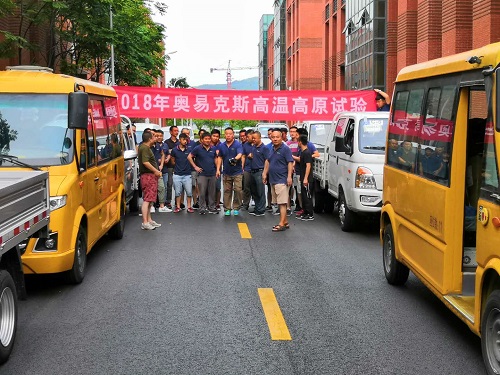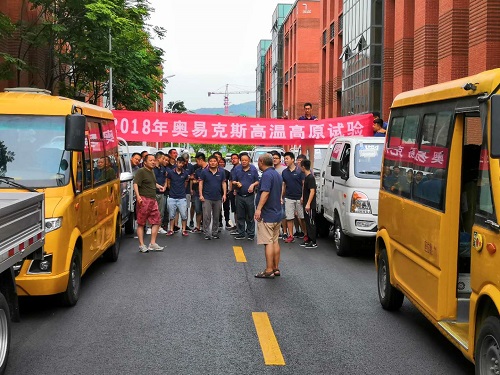On August 2, the first summer test kicked off, in which AECS Research Institute dispatched a total of 17 test vehicles for powertrain calibration tests and partial adaptability tests at the high-temperature and high-altitude test cites such as Tianshui, Hami, Turpan, Dunhuang, Qilian, and Guangyuan.

This summer test focused on the engine calibration. With the increasing demand for both performance and economy, the Engine Management System (EMS) centered on the Electronic Control Unit (ECU) has become an important part of the engine. Calibration work involves setting ECU parameters in various extreme environments in order to achieve the optimum engine state.

The fact that China is so vast that it runs across various areas and climates also poses even higher requirements for EMS to auto manufacturers. Currently, the application environment of EMS in China is extremely harsh compared with the rest of the world auto market: the altitude, the highest/lowest temperature in desert, hot-moist and cold-moist environments are all the most extreme in the world. To better adapt the vehicles developed for domestic market for a wider range of climates, the automakers therefore have faced a demanding challenge of engine development.
The road test is conducted after a systematic bench test and centers around the "three high" tests (high temperature, high-altitude coldness, and high-altitude). Through tests under various road conditions such as high temperature, high-altitude coldness, and high-altitude, the designed vehicle performance is comprehensively verified and proper parameters are set for ECU in order to ensure that the engine and the vehicle can live up to the demanding standards for safety, environmental protection and driving comfort in different circumstances.

The basic requirement for summer calibration test is that the ambient temperature should be above 35℃, and the test vehicles should be from the same production batch and in good condition. Two test vehicles should be used at least for the sub-item test for each model so as to ensure the reliability and consistency of the final test data. What’s more, all test vehicles in the calibration are equipped with professional collectors for comprehensive monitoring of the parts.